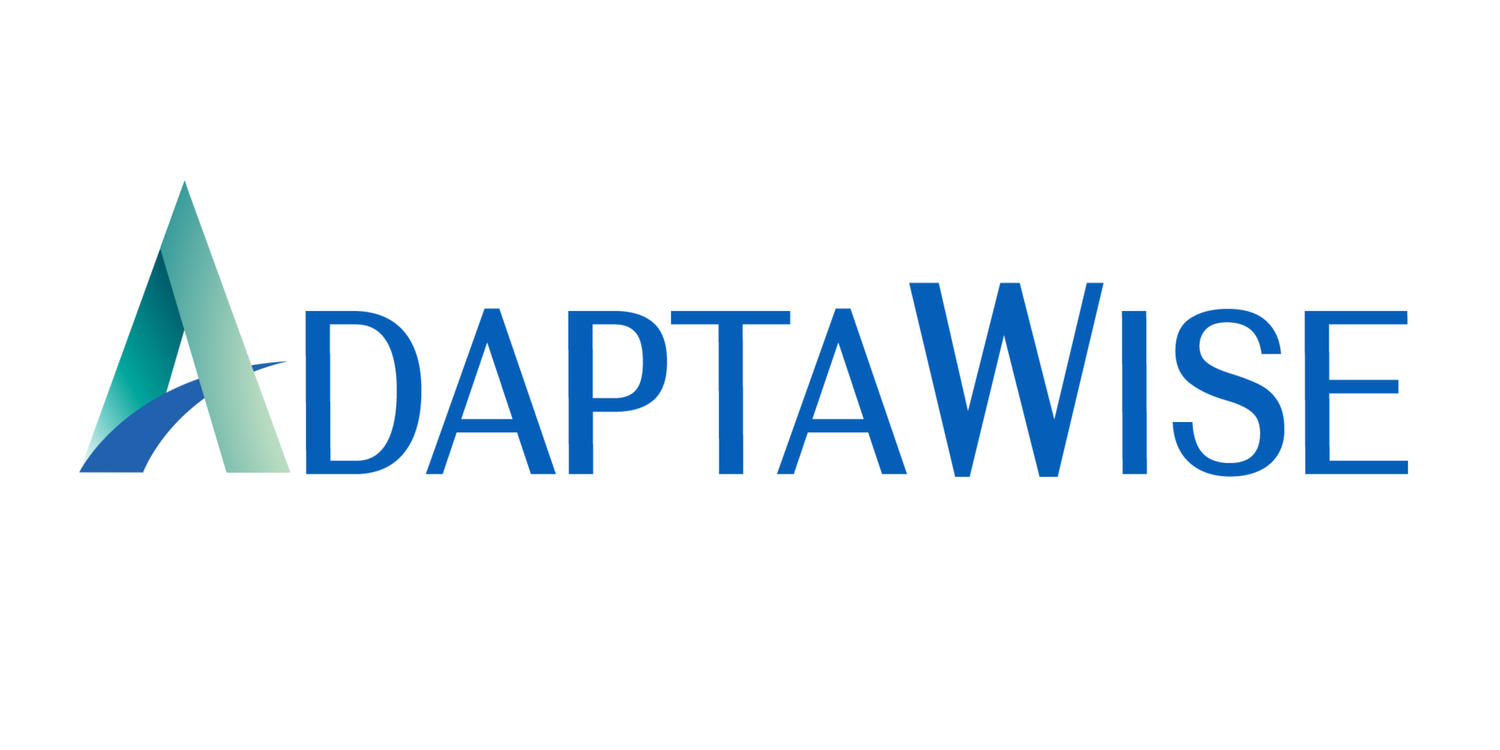SERVICES FOR LEADERSHIP TEAMS
I Help Businesses Thrive Through Healthy Leadership Teams
Strong teams don’t happen by chance. I help leadership teams uncover the real issues that block collaboration, communication, and execution — the ones that don’t show up on meeting agendas.
Through facilitated conversations, practical tools, and a focus on trust, teams learn to tackle conflict productively, make faster decisions, and align execution with vision.
Get Your Leadership Team to Work Together to Create Value and Drive Results
Business leaders with ‘team issues’ come to me for two main reasons.
Leaders see slow execution of strategies and know the team could be working more effectively together. They want to develop the potential of their people and improve teamwork — making sure the “right people are in the right seats” with clear support and expectations.
Leaders are managing disruptive conflict on their team. Whether overt or underground, this conflict gets worse over time, eating up the time and energy of the leader and the team. Unproductive conflict interrupts workflows, reduces innovation, and impairs decision-making because people are reluctant to share information and bring up questions or concerns.
My work helps leaders and teams make sure the right people are in the right seats. We get to the root of performance issues and use strengths assessments to leverage the talents of the team. We get to the root of the conflict so it can be transformed into creative problem-solving.

“Nancy’s guidance contributed to a team effort that resulted in triple-digit growth in key areas of our business over 12 months.”
— Jamie McNaughton, VP, McNaughton Inc.
“Nancy has had a major impact on our leadership team through systemic team coaching.”
— James Waite, CEO, Roberson Waite Electric
“Team dynamics have changed for the better. Meetings are more cohesive and less hostile.”
— Anthony Hernandez, CFO, Roberson Waite Electric
MY LEADERSHIP TEAM SERVICES
Get Rid of Friction in Your Leadership Team
How I Help
Drawing on my background as a psychologist, I help leadership teams “work through their sh*t” so the same issues don’t keep resurfacing. We get to the root of conflicts, sort through differences, and break unhealthy patterns. This may happen through:
Confidential 1:1 meetings
Facilitated team conversations
Targeted sessions to address the toughest issues
The Results
Team members become more aware of themselves and each other. Instead of letting differences create friction, they learn how to leverage them — turning diverse perspectives into stronger decisions, better collaboration, and momentum for the business.
Why Conflicts Happen
Stalemates and communication breakdowns rarely come from people simply not liking each other. More often, they’re rooted in:
Different preferences or points of view
Clashing values or strengths
Competing departmental priorities (think sales vs. operations)
When Differences Go Unchecked
If those differences aren’t understood, they get personalized — and friction builds. People stop talking to each other, form sub-groups, feel misunderstood, and avoid bringing issues up in leadership meetings. Progress stalls and decisions drag.

“Nancy gave me the confidence to grow from a solo coach to building a thriving team.”
— Frances Walker, Owner, Frances Walker Businesses LLC
“Nancy has a remarkable ability to quickly identify and sensitively address unspoken team dynamics.”
— Sharon Strickland-Clark, MaSatori
“Nancy’s guidance contributed to a team effort that resulted in triple-digit growth in key areas of our business over 12 months.”
— Jamie McNaughton, VP, McNaughton Inc.
MY APPROACH
How I Work
My approach helps visionary leaders and teams work more efficiently, talk more effectively, and adapt to challenges with wisdom and resilience. When underlying issues are effectively addressed, everything improves.
-
Everything starts with a conversation. It’s free, confidential, and practical, and there’s no commitment to move forward. I listen to your situation, give you some insights about what might be going on, and suggest the next most practical step. If it sounds like it’s a good fit for us to work together, we’ll talk about what that might look like for your particular situation.
-
This planning phase can span up to 30 days as we talk more in-depth about the company’s needs and opportunities. Because it’s often the case that leaders don’t know exactly where or what the trouble is, nor the best approach to solve it, I typically engage a discovery process where I conduct interviews, do strengths assessments, and outline a strategy for accomplishing prioritized goals. I then use the insights gained through interviews and assessment data to create the most effective and efficient plan.
-
Implementing the co-created strategy often includes 1:1 meetings, participation in leadership team meetings, individual check-ins with team members, facilitated conversations between two or more team members (or their direct reports), and availability for those ‘as-needed’ calls that speed up personal and team transformation.
-
We track progress through the collection of individual and team improvement data and through the use of business metrics toward your most important goals — such as meeting deadlines, improved customer responsiveness, and so on.
Creating solutions for surface problems is like putting a bandaid on a broken bone.
Get to the root and solve that instead.
Example 1
Common Symptom: people missing deadlines
Typical Solution: call for more accountability, more commitment & ‘consequences’
Frequent Outcome: minimal improvement, tolerance for not meeting quarterly goals, frustration, projects get extended
Root Issue’ Solution: identify underlying issues such as people not raising concerns early enough, not asking for help, or operating in siloes
Example 2
Common Symptom: people not doing what they say they’ll do
Typical Solution: emphasize accountability and commitment, create ‘issues list’
Frequent Outcome: negativity, judging of others, tolerance, frustration
Root Issue’ Solution: identify reasons such as skill issue, not feeling space to speak up …
Example 3
Common Symptom: people not using processes or software
Typical Solution: new software, more training, more accountability
Frequent Outcome: work arounds when people don’t use it —> tolerance, frustration
‘Root Issue’ Solution: identify & correct misalignment between people & processes
What Drives the Return on Your Investment?
Stronger Teamwork. Your team works as more of a unit instead of separate parts, solving problems faster and getting better results.
Productive Debates. We turn disagreements into useful discussions that spark new ideas rather than causing delays or frustration.
Smarter Risk Management. Your leaders spot and handle potential problems earlier, saving money and preventing major setbacks.
More Innovation. Teams develop the trust and structure needed to bring fresh ideas to life, creating new value for your business.
Time Savings. Leaders gain back 5-10 hours each week by spending less time fixing people's problems and more time on growth.
Quick Response to Opportunities. Your team makes decisions faster when new opportunities arise, giving you an edge over competitors who move too slowly.
Frequently Asked Questions about Leadership Teams Services
-
People are understandably wary of working on business goals with a stranger in their midst. I help you determine how best to present the work so that team members see how it will benefit them. I often start with strengths assessments (which really focus on strengths) so people can see themselves and each other in a new light. Typically, team members start relaxing into the process — even enjoying it — as they see things getting easier.
-
At least half of my work is with remote clients using the platforms of Zoom, Teams, or Go To Meeting … whatever works best for the team. Whether your team meets in person or most or all of you are remote, this process has proven itself to be successful.
-
Great! EOS tightens company processes, clarifies people issues, and gets you on the road to traction. Because I’m familiar with the tools, language, and processes, I support you as you implement EOS in your company. I help to address the people issues that come to light as you strive to achieve your rocks and milestones. When I attend ‘business as usual’ meetings (L10s), I gain deep insights into the dynamics of the team and can help make adjustments in real time. My work is an excellent supplement to the EOS framework.
-
Because my work is highly customized to each client, it takes a variety of shapes. The common structure is to start with a customization process to make sure we’re addressing the most pressing needs and goals. This often involves 1:1 calls/meetings plus strengths assessments for the team to understand talents and work styles. Sometimes we add a ‘conflict inventory’ to understand how people deal with disagreements.
Then we select the right tools and process for the goals we want to achieve. We determine ideal frequency and set the stage for transformation by introducing the work and positioning its benefits for both the people and the bottom line.
Then we implement. Generally, this focuses on 1:1 scheduled meetings, ‘as needed’ calls or texts in between. leadership team meetings
-
In my experience, resources are often limited and have to be allocated carefully. Because stalemates in teams get worse over time rather than better, addressing problems sooner is more effective than later. Also, because this work is results-driven — making improvements in the team as you pursue your most important business goals — you typically save time and create more revenue because the team functions better together and uses ‘creative tension’ to innovate and iterate.
-
Though a good part of this process does involve interpersonal dynamics, leaders and team members who are not inclined toward talking about feelings appreciate the focus of our work, which is on the business goals themselves. We deal with team interactions as a way to improve the functioning of the business. This focus on business outcomes is what leaders appreciate when we’re addressing issues like ‘team health.’

“Nancy is an incredible think partner. I connected with her during a challenging time of expansion in my consulting practice, and she quickly became a trusted advisor.”
— C Kelly White, PMP
“Nancy was an invaluable resource as I stepped into new leadership roles.”
— Chelsey Foster, COO, Highpoint Community Bank
“I spent one year with Nancy as my small business coach. Within one year I excelled in ways I had previously been unable to do on my own.”
— Elaine Dalcher, Artist
ABOUT DR NANCY JONKER & ADAPTAWISE
Beginning in the early 1990’s in my clinical psychology practice, I worked with leaders, business owners, and managers. I saw how a company’s culture and leadership styles could ignite people’s energy or kill it.
Assessments that I was using for individuals and partners (for example, Kolbe Indexes™ and StrengthsFinder2.0) had powerful implications for teams. These assessment results revealed inherent and systemic sources of conflict — rather than personal — and provided a data-informed approach to building effective teams.
I also saw how my decades of experience as a psychologist helping people deal with conflict, set appropriate boundaries, and have tough conversations translated beautifully into the business world. I bring the capacity to work with teams and address the myriad of issues that derail effective problem-solving.
WE GET REAL RESULTS
Case Study - Leadership Team
-
Steve, Sam, and Sarah were co-owners of a successful second-generation family company. Business growth required an expanded leadership team beyond the four of them. They were bringing new leaders onto the team and transitioning some of the owner/management decisions to this team.
As the visionary leader, Steve was fast-paced, energetic, and optimistic. He had a vision and timeline for the company, but often felt impatient with the pace of the team.
Despite his best efforts, the team’s execution of the plans fell short of his hopes and expectations. Meanwhile, team members expressed feeling overwhelmed, overworked, and sometimes under-appreciated.
-
My work with the team included strengths assessments, facilitated conversations (usually two to three people), 1:1 check-ins, and attending ‘business as usual’ leadership team meetings.
Because I participated as fully as I did in their team meetings, underlying issues came to light very quickly. Using insights gained from these interactions and the strengths assessments, we began to make adjustments in communication, taking into account different team members’ strengths and styles of solving problems.
-
Within three months, new understandings on the leadership team forged the way not only for better communication, but for faster execution of strategies and higher profit margins. These changes were measured by their weekly ‘scorecards,’ as well as monthly reviews, and quarterly business metrics.

“My biggest takeaway was the clarity Nancy helped me gain, which allowed me to focus on the right things at the right times.”
— Sandy Moll, CEO, Advanced Business Solutions
”Some of our team still talk about the company training session and refer to the reports Nancy provided.”
— Emily Dykema, Integrator, Culver CPA
“Nancy is real and authentic, bringing a wealth of knowledge to every conversation. I always learn so much from her.”
— Tim Walker, Owner, The Experia Group
What You Can Expect
-

Stop People Problems From Spreading Below the Surface
If your company is held back by communication or people issues, it won’t change by itself.
Issues get worse until they reach a breaking point, unless you take charge of actually addressing them. Working on adjacent issues, such as business strategy or general leadership, is valuable but won’t fix the underlying issues.
-

Save Time By Building Skills ‘On the Job’
Develop team skills while striving toward your most important business outcomes.
You don’t need to learn skills and later try to apply them to what you do. Rather, you and your team work on your actual questions under expert guidance, so you reach better decisions faster. We illuminate roadblocks that need to be cleared and shift them in real time. -

Use Business Metrics To Track Progress With Teams
“That which is measured improves.”
~ Karl Pearson
Goals such as team health are great, but they’re often too abstract. Instead, we aim for clear, measurable goals such as faster, more consistent implementation of plans and faster revenue growth. Abstract goals can distract from your main focus.

"Nancy listened and heard what I wasn't saying. Then played it back to me or asked me a question that got me to think or come to a realization."
— L & D Executive
“Nancy helped me uncover layers of limiting beliefs that I wasn't able to see. The biggest impact was on my mindset. By addressing that, I believe I was able to move forward and take more action than I would have otherwise.”
— Entrepreneur
“Nancy has a firm grasp on the work so when her intuition is combined with tactical steps, its awesome. She helped me to see blind spots and successes in my own development/growth.”
— Entrepreneur
Let’s Talk
During your Free Business Therapy Session, we’ll discuss the particulars of your situation. This includes:
your experience as a leader / owner in the company
trouble areas you’re seeing in the team/company, and what you think is going on
what you’ve tried in the past to solve them
the next practical step(s) to take
if it seems there may be a good fit for us to work together, we’ll talk about what that would look like
This call is confidential, and there’s no assumption or pressure to work with me at the end. However, this call is meant for people who are interested in learning more and possibly working together. If you prefer to email me directly, send a message to nancy {at} drjonker.com.



















